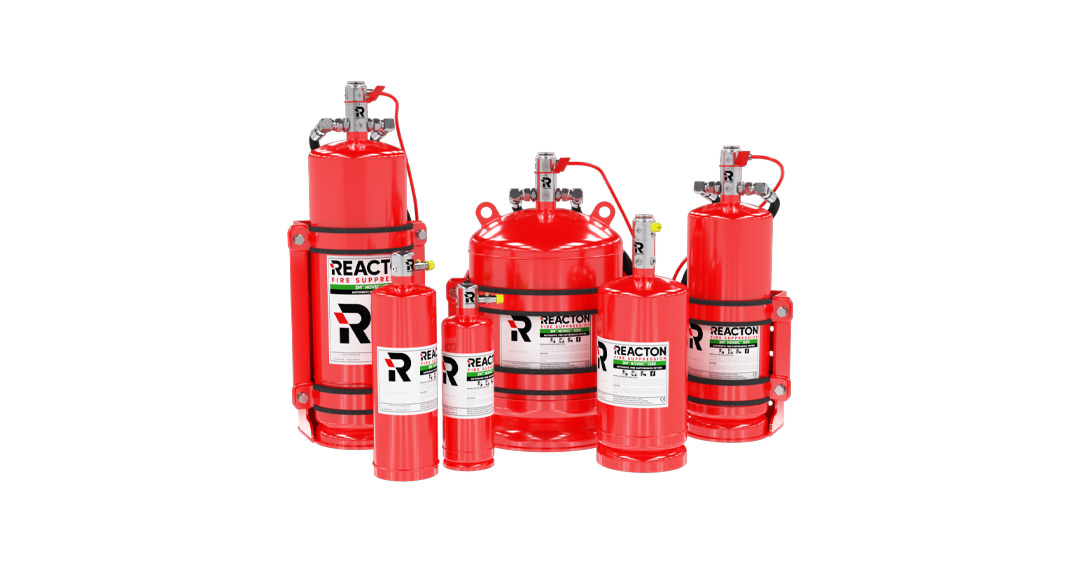
What are Clean Agents?
The term Clean Agent is linked to the ability to be used in firefighting and not leave any residue. They are all designed to extinguish fire, have zero Ozone Depletion Potential (ODP) and be electrically nonconducting gaseous fire extinguishants that do not leave a residue upon evaporation.
Clean Agents are commonly seen in the industry as Halocarbons, Inert gases and CO2*.
How do they work?
Most of us know about the basic fire triangle: heat, oxygen and fuel. But when we talk about Clean Agents, and in particular halocarbons, we need to bring in the fire tetrahedron, as this adds chemical chain reaction to the previous mentioned items.
Halocarbon Clean Agents break up the uninhibited chain reaction of combustion by removing the thermal energy of a fire where the combustion reaction cannot sustain itself.
Inert gas Clean Agents lower the oxygen to a point where fire cannot sustain itself.
The advantages of Clean Agents
What are halocarbon and inert gas Clean Agents?
These are the two main families for Clean Agents. To explain the difference in more detail it's helpful to break down examples, standards and tests for each.
Halocarbon Clean Agents
A gaseous fire extinguishant that includes as a primary component, one or more organic compounds containing the elements fluorine, chlorine, bromine and iodine (please note that certain elements mentioned previously are not permitted in the use of zero ODP Clean Agents).
These systems are typically stored as liquid in superpressurised containers and discharged as a gas.
| Common Examples | FK-5-1-12, HFC-125, HFC-227ea |
| Common Design Standards | NFPA 2001, BS EN 15004, ISO 14520, VdS 2381 |
| Common Approval Schemes | LPCB, FM, UL, VdS |
| Common Test Standards | LPS 1230 / 1666, FM 5600, UL 2166, VdS 2344 / 2454 |
Inert Gas Clean Agent
A gaseous fire extinguishant that includes as primary components, one or more elemental gases such as argon and nitrogen. Blends of inert gases may also contain carbon dioxide as a secondary component.
These systems are typically stored at high pressure as a gas in seamless cylinders.
| Common Examples | IG-55, IG-541, IG-01, IG-100 |
| Common Design Standards | NFPA 2001, BS EN 15004, ISO 14520, VdS 2380 |
| Common Approval Schemes | LPCB, FM, UL, VdS |
| Common Test Standards | LPS 1230, FM 5600, UL 2127, VdS 2344 / 2454 |
What Clean Agents do Reacton use?
Reacton's Clean Agent range consists of Reacton 1230 Clean Agent and FM-200™ waterless fire suppressant from Chemours™. These are the most trusted and tested liquefiable gases on the market, with all supply being solely through the biggest names in the industry when it comes to Clean Agents.
Reacton Clean Agent extinguishing mediums all have the following approvals:
All products are recognised and listed in standards such as ISO 14520 and NFPA 2001.
* For the purpose of this article we have omitted CO2 due to the additional safety measures required and that it is covered by different standards than the products mentioned above, such as NFPA 12, BS 5306-4 and ISO 6183.
These Stories on Clean Agent
Reacton HQ - UK and Europe
14 Baynes Place, Waterhouse Business Park, Chelmsford, Essex, CM1 2QX, UK
Reacton Americas
23335 N 18th Dr #140, Phoenix,
AZ 85027, United States
Reacton UAE
SIDRA Tower, Office 905,
Sheikh Zayed Road, Dubai, UAE
No Comments Yet
Let us know what you think